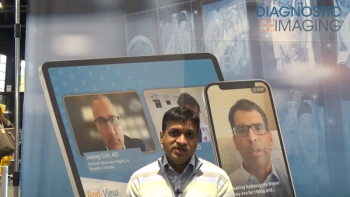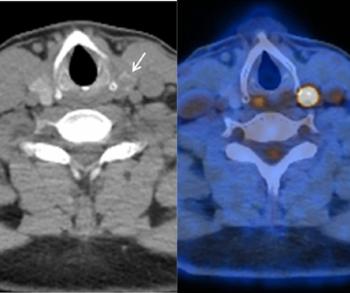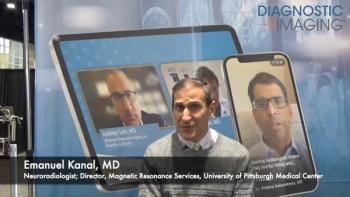Can Multimodality AI Enhance CT Detection of Medium Vessel Occlusions?
The use of multiple artificial intelligence (AI) modalities to assess blood vessel density reduction and computed tomography perfusion (CTP) mismatch values facilitated a 93.3 percent detection rate for medium vessel occlusions, according to research presented recently at the International Stroke Conference.
Emerging research suggests that artificial intelligence (AI) could significantly enhance computed tomography (CT) diagnosis of medium vessel occlusions (MeVOs).
In a recent study, presented at the International Stroke Conference (ISC) in Phoenix, Ariz., researchers assessed the use of multiple AI-enabled software modalities for 150 patients with MeVOs. The cohort included 65 patients with an M2 occlusion, 58 patients with P2/P3 occlusions of the posterior cerebral artery (PCA), 14 patients with A2/A3 occlusions of the anterior cerebral artery (ACA) and 13 patients with M3 occlusions, according to the study.
The reviewed AI modalities included Rapid LVO (RapidAI), which is FDA-cleared for identification of large vessel occlusions (LVOs); Rapid CTA (RapidAI), which enables review of hemispheric differences in blood vessel density; and Rapid CTP (RapidAI), which provides automated hypoperfusion intensity ratios (HIRs) from CT perfusion (CTP) to facilitate collateral flow estimates.
The researchers found that the combination of Rapid LVO and Rapid Vessel Density identified MeVO in 52.6 percent of cases. In addition to Rapid LVO identifying 41 out of 150 MeVO (27.3 percent), the study authors noted the Rapid Vessel Density module found vessel density reductions ranging between 20 to 40 percent in 38 patients (25.3 percent).
“MeVOs detection was almost doubled with the use of the (blood vessel density module) in conjunction with the LVO module,” wrote study co-author Alejandro M. Spiotta, M.D., a professor of neurosurgery and neuroendovascular surgery, and chief of the Neuroendovascular Surgery Division at the Medical University of South Carolina, and colleagues.
Rapid CTP identified CTP mismatch volumes in 85.9 percent of the 71 patients with MeVO who were not diagnosed with Rapid CTA or Rapid LVO, according to the study authors. The researchers said the combination of the three AI-enabled modalities resulted in a 93.3 percent detection rate for MeVOs.
The combination of Rapid LVO and Rapid CTA had comparable diagnostic accuracy to the combination of all three AI modalities for M1 occlusions (98.2 percent vs. 100 percent). However, the inclusion of Rapid CTP led to significantly higher accuracy rates for other occlusions, including ACA (A2/A3) occlusions (100 percent vs. 69.2 percent) and PCA (P2/P3) occlusions (87.9 percent vs. 27.6 percent).
For centers that don’t have access to CTP imaging, the researchers noted that rapid vessel density mapping could play a viable role in facilitating timely triage of patients with MeVOs.
“Vessel density maps could be useful to flag MeVO patients for review at centers without CTP capabilities,” added Spiotta and colleagues.
Reference
1. Sowlat MM, Zamarud A, Albers GW, Campbell B, Heit JJ, Spiotta AM. Detecting medium vessel occlusions and collateral assessment with multimodality AI approach. Poster presented at the International Stroke Conference, February 7-9, 2024, Phoenix, Ariz.
Newsletter
Stay at the forefront of radiology with the Diagnostic Imaging newsletter, delivering the latest news, clinical insights, and imaging advancements for today’s radiologists.




























